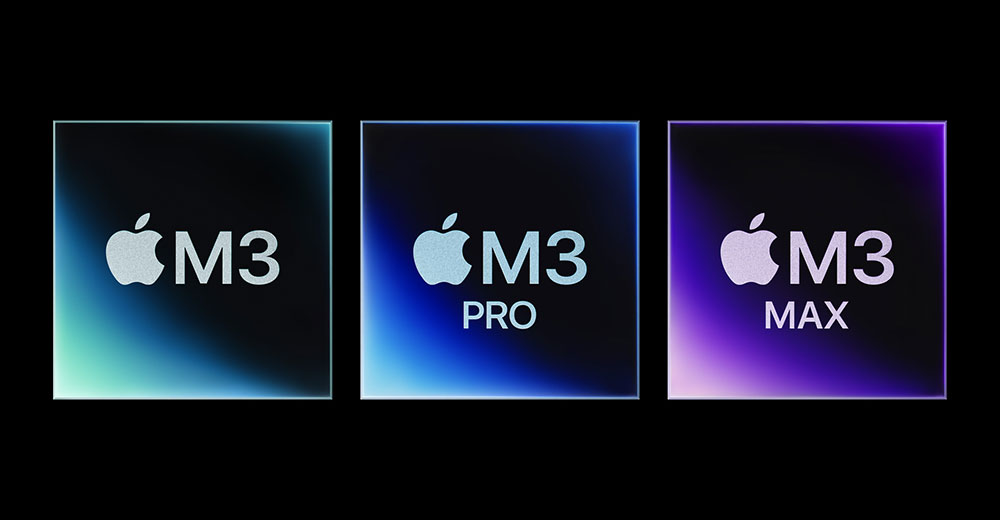It has been a debate for many years in the technology world about whether to buy a Mac or a PC. Both platforms have their strengths and weaknesses. Various factors, such as user preferences, requirements, and specific use cases, can influence the decision.
Apple’s move to Apple Silicon and the Arm-based versions Windows introduced in recent years have given this decision making process a new dimension.
We will explore these factors to see what consumers and business users have to consider when selecting a PC or Mac, and how Arm versions Windows and Apple Silicon influence these decisions.
What to Consider Before Buying a Computer
Budget is one of the most important factors when selecting a PC. PCs are available in a range of price points, which makes them affordable to consumers and businesses of all sizes.
Budget-friendly PCs are a great alternative to expensive gaming or workstation computers. They offer exemplary performance in everyday tasks.
Some Arm laptops are more affordable than their x86 equivalents, thanks to the availability of Windows-based Arm devices.
Compatibility
Compatibility is a must for business PC users. Windows is the preferred operating system for business users because of its legacy applications.
Some older applications may not run on newer processors as the industry moves towards Arm-based Windows.
In the past companies were forced to balance the efficiency of Arm and its battery life with potential compatibility issues.
Microsoft is becoming more convinced of the Arm version as the direction the puck will take.
Performance
When it comes to performance, PC users have many options. The PC user can select from budget laptops to powerful workstations.
The performance of a computer is affected by the CPU, GPU, RAM, and other components. The Arm-based Windows devices usually offer greater power efficiency for longer battery life. However, they may be less powerful than high-end x86 Windows PCs when performing demanding tasks.
Customizability
PCs can be built to order. Users can choose specific components for their PCs to suit their needs. This feature is particularly useful for power users or businesses with special needs.
Windows Arm-based devices have fewer customization options than traditional x86 PCs.
Windows’ vast landscape allows for extensive backward compatibility between various hardware and software devices. The ecosystem is appealing to both consumers and business owners as it caters to many needs.
Although the ecosystem is now more mature, it still has a long way to go before it reaches the level of maturity of x86.
To Arm Or Not to Arm? The Question is: To Arm or Not to Arm?
Qualcomm’s release The Snapdragon X-Elite chipset has intriguing implications for PCs and Windows Arm devices. The Snapdragon X Elite chipset’s features optimized for 5G, graphics and AI will impact the ecosystem in multiple ways.
The Snapdragon Elite AI processor was announced Oct. 24 2023. (Image Credit: Qualcomm)
Windows on Arm faces challenges in delivering performance similar to that of traditional x86-based PCs. Sales have also been disappointing. Qualcomm’s Snapdragon X-Elite chipset can potentially boost the performance and speed of Windows-based devices.
The 5G connectivity of Qualcomm’s Snapdragon Elite can support the concept of Always On, Always connected PC (ACPC). Users can expect faster, more reliable internet connectivity. This will enhance productivity and enable more seamless remote working and collaboration.
In scenarios such as cloud computing, edge AI, and other tasks, the AI and graphics capabilities of the chipset could be beneficial to Windows PCs with Arm processors.
Microsoft and Qualcomm have been working together to optimize Windows on Arm devices. The Snapdragon X’s Elite capabilities will make Windows-based Arm PCs more competitive. This will expand the market, and offer an alternative to traditional x86 computers.
It will take several weeks for third-party benchmarks to be available, so that users can make an informed choice. Qualcomm has promised the world that the Snapdragon X-Elite-based laptops would be competitive with Apple’s offerings utilizing Apple Silicon. This includes the recently released M3.
Apple Advantages
Apple is known to pay attention to the design and build of its hardware. Macs are praised by consumers for their elegant and sleek design, premium materials and high-resolution screens. Users who are looking for a computing device that is both stylish and feels premium will find this factor essential.
Apple’s design and brand appeal to many users.
Apple’s seamless integration of devices is a hallmark of its ecosystem. Apple users who own iPhones, iPads, or other Apple products may find it convenient for them to purchase a Mac because of the consistency in terms of software, file-sharing, and other features. Apple Silicon is expected to make this integration even more seamless.
Performance and Battery Life
Apple Silicon has been a major success in terms of performance, power efficiency and cost.
Apple’s Arm processors, which are custom-made for Macs, have shown impressive improvements in performance and improved battery life. This feature is especially appealing to users who want both performance as well as portability.
Software Optimization
Apple is a big proponent of software optimization.
The macOS OS is specifically designed for Apple’s hardware and provides a more seamless user experience.
Many software developers optimize their applications to run on macOS. This can lead to better performance and stability.
Price
MacBooks and iMacs have comparable high-end price tags.
Macs, despite Apple’s introduction of more affordable Macs, like the MacBook Air M1, are still more expensive than Windows PCs.
Apple will use the new Apple Silicon to put Qualcomm’s Snapdragon Elite chips in high-end MacBook Pros. M3 chip.
Apple Silicon vs. Arm-Based PCs: Tradeoffs, Implications and the Impact of Apple Silicon
Introduced Windows devices based on Arm have created a set of new tradeoffs for both consumers and business.
Power efficiency is a hallmark of Arm processors, which leads to a longer battery life for laptops and tablet computers. They may not provide the same performance as high-end x86 CPUs. This can be a concern to users who have demanding tasks.
Compatibility also is an important issue. Although Arm-based Windows is making progress in this area it may not be able to support all legacy hardware and applications, which could limit the appeal of Arm PCs for IT and enterprise customers.
Microsoft has acknowledged this issue and promised a dramatically improved x86 emulation for the new Arm versions of Windows 11. This could make this a non-factor.
Apple’s switch to Apple Silicon is a game-changer for Macs. The new Arm processors offer impressive performance improvements and longer battery life.
Apple’s new M3 chip, announced by the company on October 30, 2023, is designed to redefine computing performance. (Image Credit: Apple)
Apple faced compatibility issues with legacy Mac applications when it announced its Silicon-based Macs in 2013. Apple, however, managed this transition using its Rosetta emulator software. It ensured minimal disruptions for the users and provided developers with ample time to optimise their apps for Apple Silicon.
Closing thoughts
The choice between a Mac and PC is complicated by a variety of factors. These include the specific preferences and needs of both consumers and business owners. This decision process has been impacted by the introduction of Arm-based Windows versions and Apple Silicon, which have their own tradeoffs and implications.
The final decision on whether to choose a Mac or PC, and which Arm-based option is best, will depend on what the user values most: performance, compatibility, budget, or the wider ecosystem in the device’s operation.
It is important to make an informed choice in order to choose a device that meets the needs of the user.
Tech Advancements and Market Dynamics
Qualcomm has highlighted the Snapdragon X Elite’s powerful integrated AI processing power. This feature is a major advantage, particularly when Microsoft wants to make its Copilot tool a key element of the new Windows 11 versions.
There are still problems that require attention.
Microsoft’s ability to offer full Windows equivalency on x86 and Arm is a serious concern.
Microsoft’s support of Arm-based processors will be closely scrutinized by IT and enterprise executives, who will assess its viability as an equal Windows platform.
Nvidia’s market impact
There are rumors that Nvidia, the company renowned for its graphics cards, is preparing to discontinue their products. graphics processing prowess, a PC manufacturer, has entered the System-on-a-Chip space, which is traditionally dominated Intel and AMD.
This move will place Nvidia in competition with companies like Qualcomm and AMD. A paradigm shift is being brought about by this. Nvidia’s entrance into the SoC market, as consumers increasingly look for integrated solutions to high-performance computing could potentially reshape this landscape. It promises exciting innovations and increased competitiveness in the PC Hardware arena.
Qualcomm, however, has made huge strides in becoming a dominant player in the PC industry with the Snapdragon X Elite. Intel won’t go to sleep quietly. Intel’s legacy Intel Inside History and extensive retail marketing could impede Qualcomm’s ability to promote its superior processors.
Ironically, users can expect more compelling choices in their PC purchase decisions over the next 12 months, but confusion could be a big factor to kickstart the PC market out of its current doldrums.
The traditional criteria for buying a PC have now been changed.













